Note: Your are not logged in. We can not keep your scores or track your progress unless you Register and Log In
Securement Requirements for a Row of Metal Coils with Eyes Vertical
Coils that are transported in rows must be secured by:
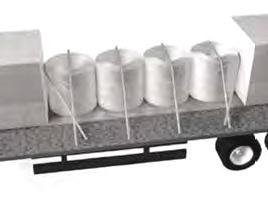
At least one direct tie-down against the front of the row of coils, restraining against forward motion, and if practicable, making an angle 45 degrees or less with the floor.
At least one direct tie-down against the rear of the row of coils, restraining against rearward motion, and if practicable, making an angle 45 degrees or less with the floor.
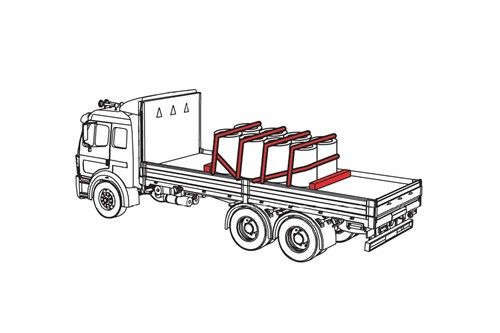
At least one indirect tie-down over the top of each coil or side-by-side row of coils, restraining against vertical motion. Indirect tie-downs going over the top of a coil must be as close as possible to the eye of the coil.
Direct tie-downs, blocking or bracing must be arranged to prevent shifting or tipping in all directions.
Note: If there are more than two coils in the front and rear rows, the direct tie-down must run outside some kind of channel that bears against all coils in these rows.
Use a friction mat under each pallet to increase the friction between the pallet and the deck. This should always be done when the deck or coil is soaked with oil.
Securement Requirements for Metal Coils With Eyes Crosswise
Step #1: Support the Coil
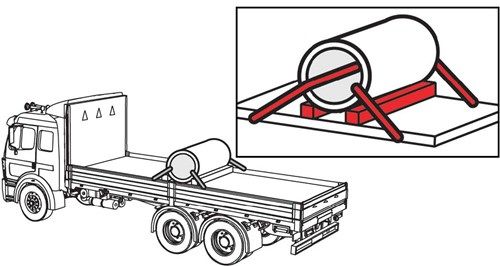
To prevent rocking, the coil must be supported above the deck.
The coil supports must be held in place so they do not become loose during a trip.
Step #2 and #3: Prevent the Coil from Forward and rearward Movement
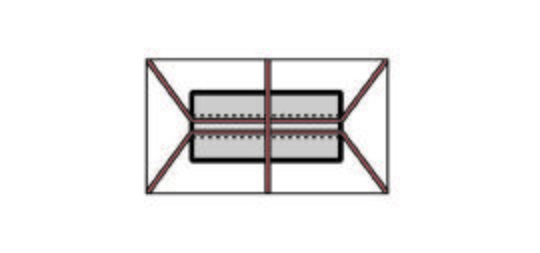
At least one direct tie-down is required through its eye, restricting forward motion.
At least one direct tie-down is required through its eye, restricting rearward motion.
If more than two chains are required, they should be placed symmetrically on either side of the coil. If an odd number of chains are required, the last chain should be to the rear.
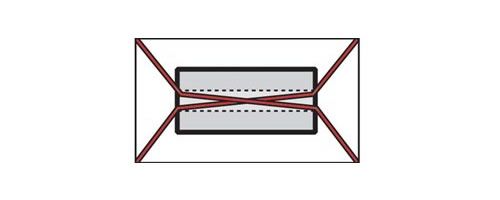
Attaching direct tie-downs diagonally through the eye of a coil to form an X-pattern when viewed from above the vehicle is prohibited.
Multiple-Choice Questions:
Whenever possible, a row of metal coils with eyes vertical requires one direct tiedown to secure against rearward movement at what minimum angle?
- 45 degrees.
- 30 degrees.
- 90 degrees.
- 180 degrees.

At least one direct tiedown against the front of the row of coils, restraining against forward motion, and if practicable, making an angle 45 degrees or less with the floor.
At least one direct tiedown against the rear of the row of coils, restraining against rearward motion, and if practicable, making an angle 45 degrees or less with the floor.
Which means of securement is prohibited when transporting coils with the coil eye crosswise on the vehicle?
- At least one indirect tiedown over the top.
- Attaching direct tiedowns diagonally through the eye of a coil to form an X-pattern when viewed from above.
- One direct tiedown through its eye, restricting rearward motion.
- Attaching direct tiedowns diagonally through the eye of a coil.

Attaching direct tiedowns diagonally through the eye of a coil to form an X-pattern when viewed from above the vehicle is prohibited.
What is the minimum number of tiedowns required through the eye of a metal coil loaded crosswise?
- 2
- 3
- 1
- As many as possible.
Step #2 and #3: Prevent the Coil from Forward and rearward Movement

At least one direct tiedown is required through its eye, restricting forward motion.
At least one direct tiedown is required through its eye, restricting rearward motion.
Complete!
You can Return To The Table Of Contents







 TT On Facebook
TT On Facebook